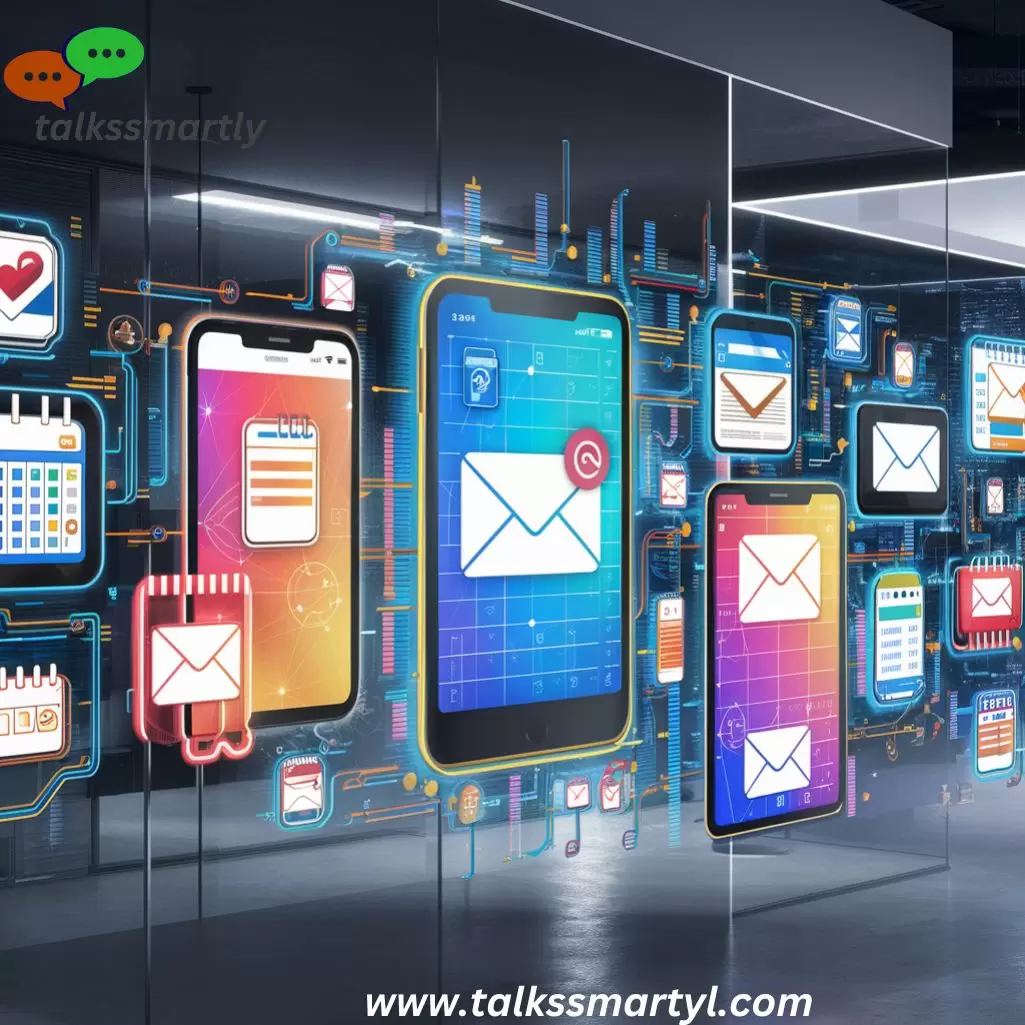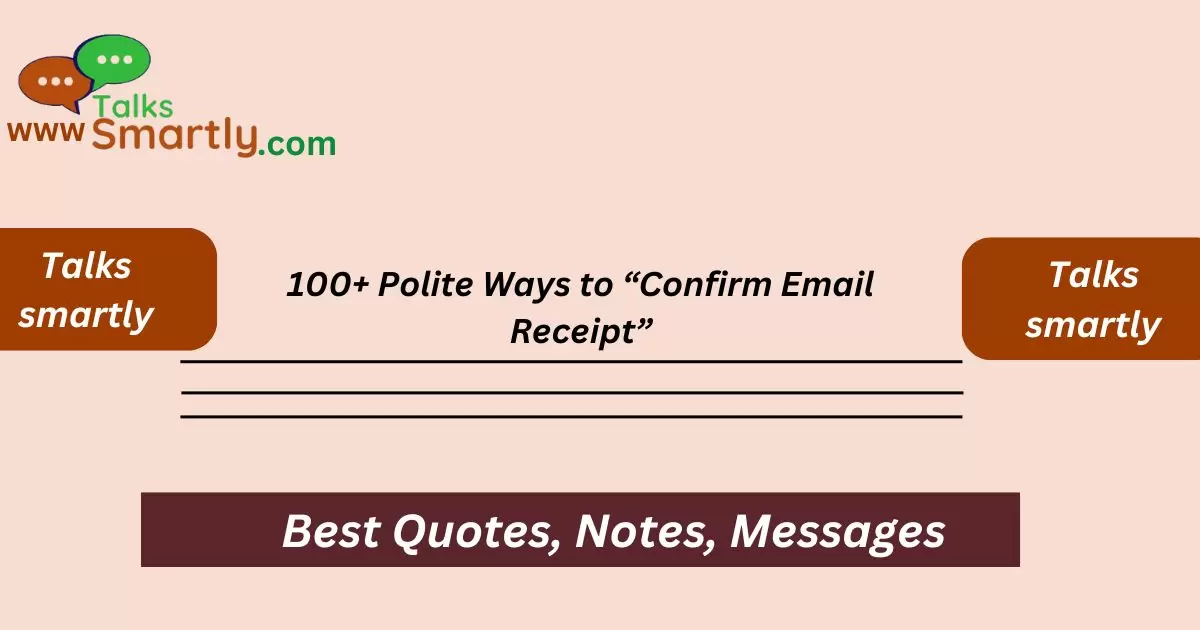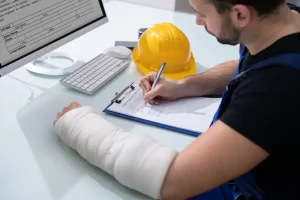“Thank you for your email; I have received it successfully. I will take the necessary time to review its contents thoroughly and will respond to you with any required actions.”
In today’s digital age, email communication is essential for both personal and professional interactions. One of the key aspects of effective communication is acknowledging the receipt of an email.Confirming email receipt is not only a polite gesture, but it also ensures that both parties are on the same page regarding the information exchanged.
This simple act of acknowledgment can help avoid misunderstandings and build trust in your communication.
Taking action to confirm email receipt shows that you are attentive and responsible. Whether you’re in a business setting or communicating with a friend, letting the sender know that their email has been received can improve the flow of communication.
It helps in setting expectations for when a response might be given or if further action is required.
This article will explore various ways to confirm email receipt in a polite and professional manner. We’ll cover best practices, email templates, and scenarios where confirming receipt is crucial.
You’ll also find insights into the role of cultural differences in email acknowledgment and how technology is shaping the future of email communication. By the end, you’ll be equipped with over 100 polite ways to confirm email receipt, ensuring you always handle this task with confidence and courtesy.
Why It’s Important to Confirm Email Receipt
- Builds trust in communication.
- Ensures clarity and avoids misunderstandings.
- Shows professionalism and attentiveness.
- Acknowledges the sender’s effort.
- Helps in tracking communication.
- Sets expectations for further replies.
- Improves relationships in professional settings.

- Demonstrates responsibility.
- Keeps both parties informed.
- Prevents unnecessary follow-ups.
- Strengthens written communication skills.
- Encourages promptness in response.
- Reinforces good communication habits.
- Avoids the perception of ignoring the sender.
- Enhances organizational efficiency.
Ways to “Confirm Email Receipt”
- Thank you for your email, I have received it.
- I appreciate your message; I have received it.
- Your email has been received. Thank you.
- I confirm receipt of your email.
- Your message was successfully received.
- Thank you, I have received your email.
- I acknowledge the receipt of your email.
- Received your email. Thanks!
- Thank you, I got your message.
- I have received your email and will respond shortly.
- Message received. Thank you!
- Thank you, your email was received.
- I’ve got your email, thank you.
- Thank you for reaching out, I have received your email.
- I confirm I have received your message.
When to Confirm Email Receipt
- After receiving important documents.
- When getting instructions from a supervisor.
- If someone is expecting a quick reply.
- When the email contains time-sensitive information.
- After receiving a job application or resume.
- When you’re part of a group email.
- If the email is from a client or customer.
- When receiving feedback or criticism.
- After receiving an invitation to an event.
- When you receive a query or question.
- If the email is related to an ongoing project.
- When receiving information about an appointment.
- If someone is asking for confirmation.
- When the sender is waiting for a reply before taking action.
- After receiving an email that was marked as urgent.
How to Confirm Email Receipt Politely
- Use polite language and a friendly tone.
- Start with a thank you.
- Be brief but clear.
- Acknowledge the content of the email.
- Mention if a further response is needed.
- Provide a timeline if you’ll respond later.
- Avoid using one-word responses.
- Use professional language.
- Express appreciation for the sender’s effort.
- Use a polite sign-off.
- Avoid jargon or slang.
- Use “please” and “thank you” where appropriate.
- Be honest if you need more time to respond.
- Refrain from sounding robotic.
- Tailor your response to the sender’s tone.
When someone says, “Talk to you tomorrow,”
Best Practices for Confirming Email Receipt
- Respond promptly after receiving the email.
- Use proper grammar and spelling.
- Be concise.
- Always personalize your response.
- Keep it professional, even in casual settings.
- Include a subject line that reflects the content.
- Be respectful in your language.
- Make sure your email is easy to read.
- Avoid using too many exclamation marks.
- Keep your response focused.
- Use the sender’s name if appropriate.
- Reiterate key points if necessary.
- Use a polite closing.
- Double-check your response before sending.
- Follow up if required.
Email Templates for Confirming Receipt
- Template 1: Dear [Name],
Thank you for your email. I confirm that I have received it and will review the details shortly.
Best regards,
[Your Name] - Template 2: Hi [Name],
Just a quick note to let you know I’ve received your email. Thank you!
Kind regards,
[Your Name] - Template 3: Hello [Name],
I’ve received your message and appreciate the information.
Best,
[Your Name] - Template 4: Dear [Name],
I acknowledge the receipt of your email. I will get back to you soon.
Regards,
[Your Name] - Template 5: Hi [Name],
Just wanted to confirm that I’ve received your email. Thank you for reaching out.
Sincerely,
[Your Name] - Template 6: Dear [Name],
I have received your email and will respond with the requested information shortly.
Best,
[Your Name] - Template 7: Hello [Name],
Thank you for your email. I’ve received it and will be in touch soon.
Best regards,
[Your Name] - Template 8: Hi [Name],
I’m writing to confirm that I received your email. Thank you for the update.
Regards,
[Your Name] - Template 9: Dear [Name],
I acknowledge the receipt of your message. I’ll review it and follow up as needed.
Best regards,
[Your Name] - Template 10: Hello [Name],
Thank you for your message. I confirm that I have received it and will get back to you soon.
Regards,
[Your Name] - Template 11: Hi [Name],
I’m confirming that I received your email. Thank you for reaching out to me.
Best,
[Your Name] - Template 12: Dear [Name],
Thank you for your email. I’ve received it and will get back to you shortly.
Best regards,
[Your Name] - Template 13: Hello [Name],
Just confirming that I’ve received your email. Thank you!
Regards,
[Your Name] - Template 14: Hi [Name],
I have received your email and appreciate your message.
Best,
[Your Name] - Template 15: Dear [Name],
I acknowledge the receipt of your email and will follow up soon.
Best regards,
[Your Name]
Common Mistakes to Avoid When Confirming Email Receipt
- Delaying your response.
- Being too brief without confirming receipt.
- Using informal language in professional settings.
- Failing to acknowledge the content of the email.
- Sounding robotic or impersonal.
- Forgetting to thank the sender.
- Not following up if necessary.
- Using jargon or slang.
- Responding without reading the email fully.
- Ignoring the sender’s tone.
- Sending a generic response.
- Not addressing the sender by name.
- Using too many exclamation marks.
- Overloading the response with unnecessary information.
- Failing to check for errors before sending.
Tools and Technologies for Managing Email Receipts
- Email tracking software to confirm receipt.
- Automated response systems.
- CRM tools to manage communication.
- Email templates for quick responses.
- Collaboration platforms like Slack for confirmation.
- Email scheduling tools.

- Use of AI-driven assistants for managing emails.
- Notification systems in email clients.
- Email management apps for better organization.
- Cloud storage integration for easy access to emails.
- Data analytics tools for tracking email engagement.
- Mobile apps for on-the-go confirmation.
- Encryption tools to secure email content.
- Inbox zero strategies for efficient email handling.
- Customizable email filters to prioritize messages.
The Role of Cultural Differences in Email Acknowledgment
- Understanding the tone in different cultures.
- Importance of formality in various regions.
- Cultural expectations around email response time.
- Use of honorifics in certain cultures.
- Impact of language barriers on email acknowledgment.
- Different approaches to politeness.
- Variations in email structure.
- The significance of hierarchy in communication.
- Cultural sensitivity in tone and wording.
- Different customs around directness in communication.
- Use of translation tools for clarity.
- Respecting cultural norms in email exchanges.
- Understanding non-verbal cues in written communication.
- Adjusting language to fit cultural expectations.
- Avoiding misunderstandings through cultural awareness.
Real-Life Scenarios: When Confirming Email Receipt Made a Difference
- Avoiding a missed deadline by confirming receipt.
- Ensuring project success through timely acknowledgment.
- Improving client satisfaction by confirming important documents.
- Avoiding miscommunication in team projects.
- Enhancing customer service with prompt acknowledgment.
- Building stronger relationships with stakeholders.
- Preventing costly mistakes in legal communication.
- Improving efficiency in event planning.
- Saving time by confirming receipt of instructions.
- Avoiding confusion in multi-party emails.
- Improving collaboration in remote teams.
- Ensuring payment accuracy by confirming receipt of invoices.
- Strengthening vendor relationships through prompt acknowledgment.
- Enhancing employee satisfaction by confirming HR communications.
- Ensuring compliance in regulatory environments.
The Future of Confirming Email Receipts
- Automation of email acknowledgment.
- AI-driven responses.
- Increased use of chatbots for email management.
- Integration of voice assistants in email confirmation.
- Enhanced security features for email tracking.
- Greater reliance on collaboration tools.
- Use of predictive text in email responses.
- More personalized templates.
- Growth of mobile-first email tools.
- Improved analytics for email engagement.
- Focus on privacy and data protection.
- Adoption of real-time communication over email.
- Advanced filtering options for priority emails.
- Shift towards more informal communication methods.
- Integration with project management tools.
Answers to Key Questions.
What is the best way to confirm email receipt?
The best way to confirm email receipt is to respond promptly, use polite language, and acknowledge the content of the email clearly and concisely.
Why is confirming email receipt important?
Confirming email receipt is important because it builds trust, ensures clarity, and prevents misunderstandings in communication.
When should I confirm receipt of an email?
You should confirm receipt of an email when it contains important information, instructions, or when the sender expects a confirmation to avoid any miscommunication.
Can I use automated responses to confirm email receipt?
Yes, automated responses can be used to confirm email receipt, especially when you receive a high volume of emails. However, make sure the automated response is polite and professional.
How can I make my email receipt confirmation more personal?
To make your email receipt confirmation more personal, address the sender by name, briefly acknowledge the content of the email, and use a friendly tone.
Conclusion
Confirming email receipt is a simple yet powerful tool in effective communication. Whether you’re dealing with professional matters or personal conversations, acknowledging receipt ensures that both parties are aligned and informed. It builds trust, shows respect, and prevents misunderstandings.
By using polite language, responding promptly, and being clear in your acknowledgment, you enhance the quality of your communication. As technology evolves, the methods of confirming receipt may change, but the importance of this gesture will remain.
Equip yourself with these 100+ polite ways to confirm email receipt, and you’ll always be ready to handle this task with confidence and courtesy.
Remember, confirming email receipt is not just about following a formality—it’s about showing that you value the sender’s message and are committed to maintaining clear and respectful communication.












